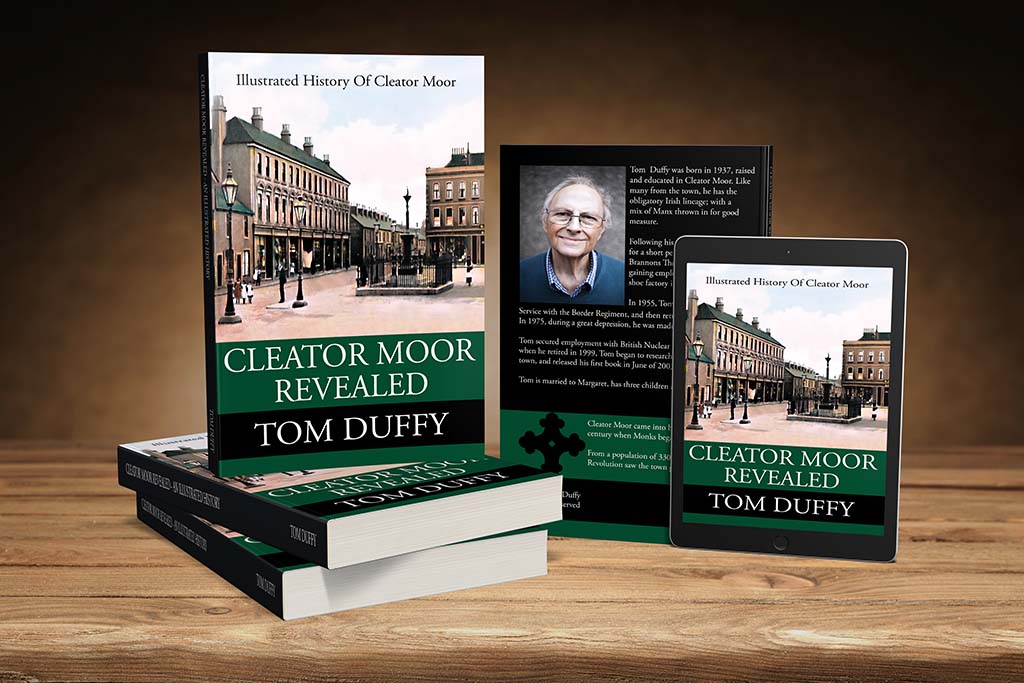- This image is available as: Framed Print, Canvas Print, Postcard, etc.
The boathouse at Devoke Water was built around 1772 from stones gathered on the shore of the tarn. It was originally designed to provide shelter, and had a fireplace. Peat was dug from nearby to fuel the fire. The building was constructed by John Jackson, a farmer from Dalegarth, and John Bowman, a fisherman. Locals would pay 2 shillings a year for the right to fish the tarn.
- Devoke is pronounce “Duvvock”
One of the chapters of Alfred Wainwright’s The Outlying Fells of Lakeland is a circular walk anticlockwise around Devoke Water, starting and finishing on the road to the east. He describes the summits Rough Crag at 1,049 feet (320 m), Water Crag at 997 feet (304 m), White Pike at 1,370 feet (420 m), Yoadcastle at 1,610 feet (490 m), Woodend Height at 1,597 feet (487 m) and Seat How at 1,020 feet (310 m), and notes that White Pike has a “splendid columnar cairn” and a view to Muncaster Castle.
The Cumbrian uplands comprise large areas of remote mountainous terrain, much of which is largely open fellside. On the open fells there is sufficient well preserved and understood evidence over extensive areas for human exploitation of these uplands from the Neolithic to the post- medieval period. On the enclosed land and within forestry the archaeological remains are fragmentary, but they survive sufficiently well to show that human activity extended beyond the confines of the open fells. Bronze Age activity accounts for the most extensive use of the area, and evidence for it includes some of the largest and best preserved field systems and cairn fields in England, as well as settlement sites, numerous burial monuments, stone circles and other ceremonial remains.
Just west of Devoke Water, on Birkby Fell is a prehistoric cairnfield, hut circle settlement, field system, funerary cairn, and a medieval shieling.
They are located on a prominent low rise on Birkby Fell to the west of Devoke Water and represents evidence of the Bronze Age and medieval exploitation of this landscape. The prehistoric cairnfield is centred at approximately SD15029690 and includes over 140 circular and oval-shaped clearance cairns up to 0.7m high. The circular cairns measure between 1m to 7.8m in diameter while the oval-shaped cairns measure between 4.3m to 13m long by 2.2m to 8m wide.
Towards the south eastern end of the cairnfield, overlooking the western shore of Devoke Water, are the remains of the three stone hut circles which collectively form the hut circle settlement. The southern of the three is built against a stone bank or wall and has an entrance in its eastern side, the western hut circle has an entrance in its north eastern side, whilst the entrance to the eastern hut circle is currently masked by tumble. A field system associated with the cairnfield and hut circle settlement is centred at approximately SD15039688 and consists of numerous short lengths of stone banking or wall and a number of cairn alignments which are interpreted as representing the line of old field boundaries in which sporadic patches of stone clearance were piled against a fence or hedge.
At SD15129689, at the highest point of the monument, there is a prehistoric funerary cairn measuring 14.7m in diameter and 0.9m high. The cairn is visible from a considerable distance and is defined by a stone kerb around its edge, but it has suffered minor disturbance by having a small modern shelter erected at its centre.
Medieval use of this area is attested by the remains of a shieling centred at SD15189694. It consists of the lower courses of a single-roomed stone-walled rectangular structure measuring approximately 12m long by 7m wide with an entrance at the centre of its western side. Pollen cores taken from the sediments of nearby Devoke Water have revealed the changing vegetational history of this area over the last 5000 years and show episodes of forest clearance and a development of grassland during the prehistoric period. During one of these episodes most trees were cut down and were soon replaced by extensive grassland. The clearance is associated with the Bronze Age.





